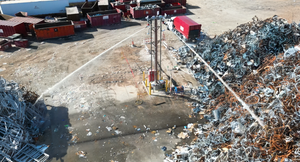New York City Plans Waste-to-Energy Facility
New York City plans to build a waste-to-energy facility as part of its sustainability agenda.
Mayor Michael Bloomberg said in a news release the city has issued a request for proposals (RFP) from private-sector firms for a pilot facility to be built in the city or within 80 miles that would process a maximum of 450 tons of waste a day to start.
New York will not provide any funding for the proposed facility and will pay a per-ton fee to the facility operator. The city said it is seeking the cleanest and latest waste-to-energy technologies, and the RFP excludes conventional incineration or mass-burn proposals. The proposals are due by June 5.
“We are using the most comprehensive sustainability program in the nation to green our city, but we have to go further,” Bloomberg said. “New Yorkers generate more than 10,000 tons of solid waste every day, and too much of it ends up in landfills. Using less and recycling more are the most effective ways to address the problem, but this project will help us determine if some of that waste can be converted to safe, clean energy to meet the city’s growing power needs.”
“The request for proposals for the development of a new and emerging solid waste management technology facility at a site in or near the city marks a significant step towards a more sustainable solid waste disposal policy for the city and complements our expanded recycling and composting efforts,” said Sanitation Commissioner John Doherty. “By implementing such a facility in the region, we will reduce the amount of waste we need to landfill, the distances we need to travel to disposal sites and total emissions into the environment.”
The project is part of New York’s PlaNYC sustainability plan, which includes doubling the amount of waste diverted from landfills by 2017 to 30 percent.
New York’s Department of Sanitation currently collects more than 3 million tons of waste per year and spends more than $300 million to ship it to landfills and facilities outside the of the city.
The city’s new waste reduction plan involves a variety of initiatives to increase waste diversion, with two-thirds of the gains coming from increased waste reduction, reuse, composting and recycling efforts. Those include expanding the city’s curbside recycling program to take additional plastics, increasing the number of public recycling bins and providing new food waste composting locations for residents.
About the Author
You May Also Like


.png?width=300&auto=webp&quality=80&disable=upscale)